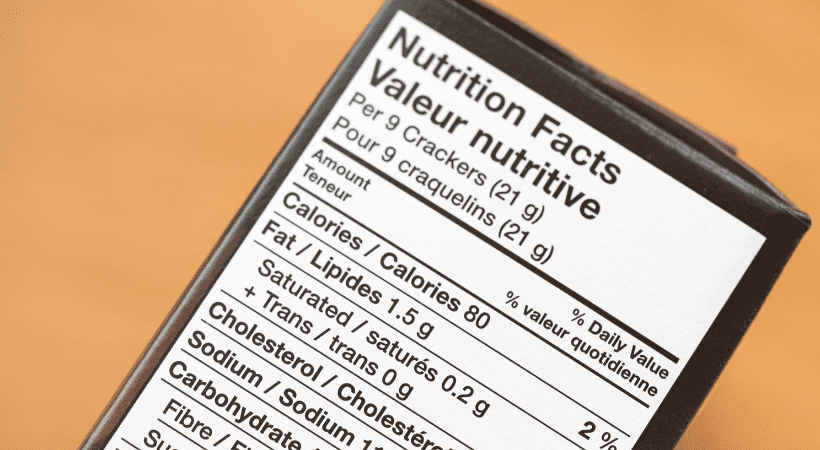Recycling Regulations in the EU and UK 2023
Recycling Regulations in the EU and UK 2023
With many different regulations on recycling and waste reduction out there, it can be confusing — and let’s face it, hard work — to make sure each product is labelled correctly. In this blog, Ashbury’s food regulatory consultant Janet Dalzell, shares insight on some of the major recycling initiatives in place across the EU and the UK.
Table of Contents:
What major recycling regulations apply in the EU in 2023?
1. Directive 94/62/EC – Identifying packaging materials and recycling instructions for consumers:
This story goes back to 1994 when Directive 94/62/EC for packaging and packaging waste was implemented in the EU. This legislation was adopted to harmonise national measures concerning packaging and packaging waste and goes beyond just food packaging. It is designed to act as a prompt for Member States to enact legislation that will ensure packaging is reused where possible, through initiatives such as deposit-return schemes or by legislating nationally for a minimum amount of reusable packaging to be placed on the market each year.
Part of the legislation (Article 8) suggested that packaging must be marked to identify what the material is made of. However, it was not until 1997 that the alphanumerical identification system was established, with its use being on a voluntary basis.
Fast forward to 2018, when the Directive was updated to reiterate Article 8 regarding the indication of packaging components on the pack or label, it also set new, and somewhat controversial recycling targets for Member States to meet.
When these changes came into force in July 2020, they spurred several national-level changes across the EU region, including in Italy and France:
Italian recycling regulations
Amendments to Directive 94/62/EC prompted Italy to introduce legislative Decree 152 which came into force on January 1st, 2022. This requires all consumer packaging on the market to indicate the material it is made of, into which waste stream consumers should place it, and recommends that details on how to recycle are provided.
Triman logo and sorting instructions in France
Under French Decree 2014-1577, recyclable packaging must bear the Triman logo, and from January 2022, it is mandatory on all household packaging (except for glass bottles). It must be accompanied by instructions on how the material should be sorted for recycling.
Remember: Any multi-country labelling will have to consider how the national rules of the intended markets interact.
Will this impact food labelling compliance?
The impact of both these schemes is significant for the industry, requiring the redesign of labels against a background of uncertainty as to whether the EU will allow these changes to proceed unchallenged, and what other changes are on the horizon.
2. Directive (EU) 2019/904 – Reducing the Impact of Certain plastic products in the EU:
In 2019, Directive (EU) 2019/904 was published detailing efforts to reduce specific plastic products including oxo-degradable plastics which contribute to microplastic levels in our oceans and waterways. The regulation requires a minimum recycled content in plastic bottles for beverages. It encourages Member States to set targets for packaging waste recycling.
Articles 6 and 7 require:
- Bottle caps and lids made of plastic are non-detachable from the rest of the container
- From 2025 PET bottles contain at least 25% recycled content, rising to 30% by 2030
- Bottles are labelled with disposal options, stating the presence of plastic and any environmental impact of littering or inappropriate disposal.
- Each Member State should collect 77% of single-use plastic bottles placed on the market by 2025 and 90% by 2029 through various means including deposit return schemes and extended producer responsibility schemes.
3. The EU’s Circular Economy Action Plan:
In July 2021, the European Commission adopted the European Green Deal Initiative — a set of proposals to help reduce greenhouse gas emissions by at least 55% by 2030 (from 1990 levels). This goal is to be achieved through suitable climate, energy, transport, and taxation policies, with the longer-term objective of making Europe the first climate-neutral continent — by 2050. The project covers all areas of the EU’s remit, including waste and recycling.
The Circular Economy Action Plan is a key component of the European Green Deal Initiative; it aims to reuse and recycle existing materials for as long as possible and tackle global challenges like climate change, biodiversity loss, pollution, and waste. It, therefore, links to Directive (EU) 2019/904, where Member States should collect 77% of single-use plastic bottles placed on the market by 2025 and 90% by 2029 through various tactics.
One such tactic which is gaining popularity across Member States and in the UK is Deposit Return Schemes (DRS) with 19 EU Member States plus the four UK nations planning to introduce a DRS scheme by 2025. Scotland is planning to launch such a scheme in August 2023.
What recycling regulations apply in the UK in 2023?
Since BREXIT, the UK is now in charge of its own recycling and packaging policy. However, as EU law was retained after the transition, many of the same regulations and evolving schemes in the EU apply.
In terms of food labelling requirements, most of those in the UK are currently voluntary, with membership organisation On-Pack Recycle Label (OPRL) being widely used. Labelling most packaging using the scheme’s Recycle Now “swoosh” accompanied by the relevant wording will be mandatory from April 2026, when the license for the Recycle Now iconography will no longer be exclusive to OPRL. Plastic films and flexibles will be exempt from the requirement to use this labelling system.
In November 2021, the UK government passed The Environmental Act which has a dedicated action plan for waste and recycling. Much like the EU, Deposit Return Schemes are high on the agenda; as previously stated the Scottish scheme launches in August 2023 and the schemes in the rest of the UK are on course to launch in 2024. The Environment Act also introduces the power for the government to implement “resource efficiency information” which includes recyclability labelling on products, which will be in place in 2026.
The most significant regulatory change in 2022 was the introduction of the UK plastic packaging tax, which saw companies charged for producing, using and holding plastics that do not contain at least 30% recycled content – which some perceive as a nearly impossible number.
The pressure is mounting
In the EU Commission Regulation (EU) 2022/1616 on recycled plastic materials and articles intended to come into contact with foods came into force on 10 October 2022. By 10 July 2023 only recycled plastics deemed to be made using a suitable recycling technology may be used. From the 10th of October 2023 third-party quality assurance schemes designed to ensure suitable plastics are collected and pre-processed will be required.
Although regulations on recycling and labelling can be complex and ever-changing, countries around the world are under more pressure than ever to increase recycling rates and place more recyclable packaging on the market. Consumers — as always — must also be made aware of their responsibilities through clear and transparent labelling. We expect there to be several further changes announced across both the EU and the UK in the future.
For advice on recycling food labelling compliance in the UK and across the EU, please get in touch with us – our regulatory consultants are here to help.
Read Next:
Next reads
The Peanut Diaries: School and Social Occasions
The Peanut Diaries: Navigating Social Events and Celebrations with Food Allergies
The Peanut Diaries: A Parent’s Journey to Uncovering their Child’s Allergy
Redefining Healthy: What the FDA’s New Rules Mean for Food Labels and Nutrition Claims
Keep up to date with our latest insights
Subscribe to our mailing list to stay in touch with the latest news, insights and updates from Ashbury





